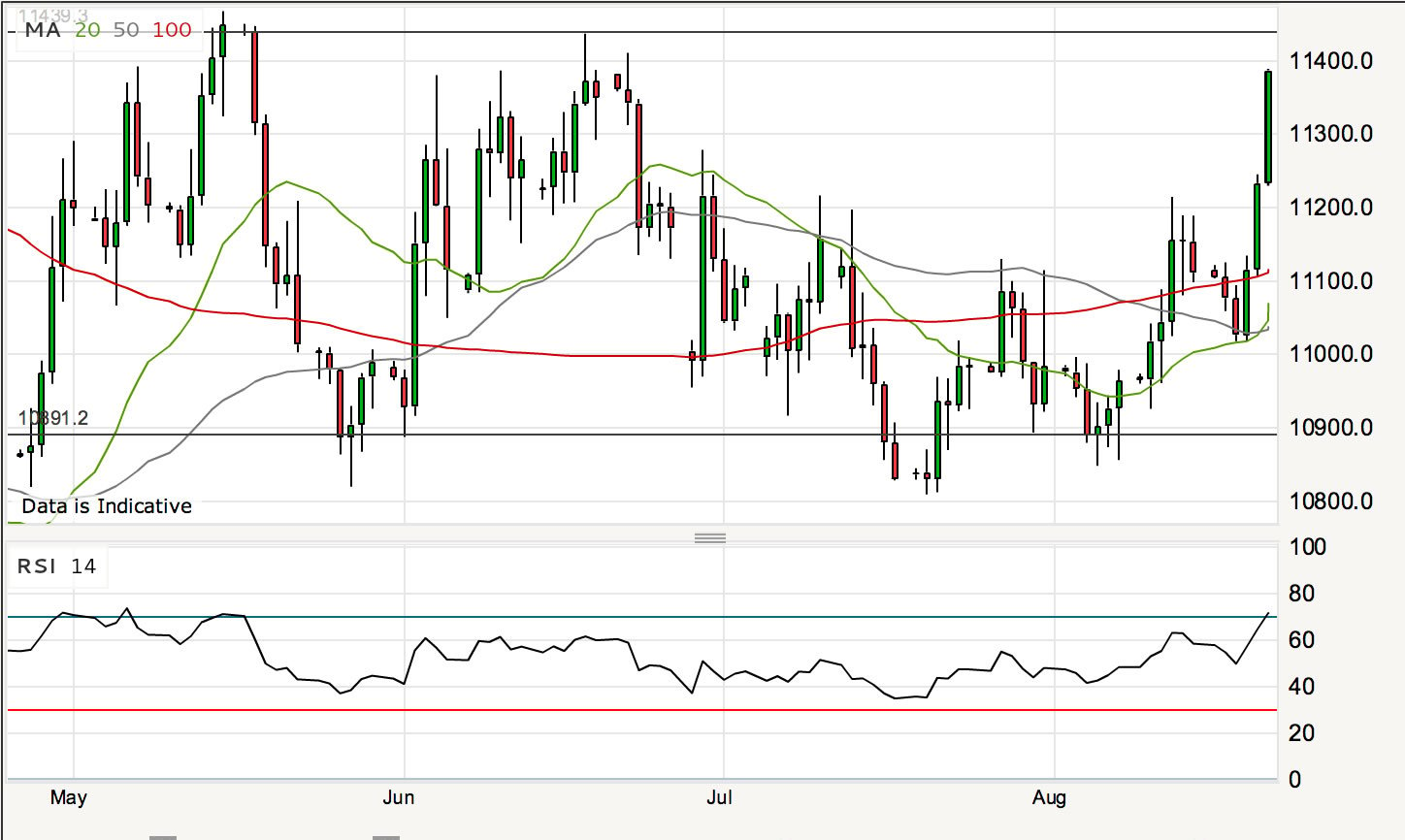EUR/USD Exchange Rate: Big Test @ 1.14
- Written by: Gary Howes
The euro / dollar exchange rate conversion (EUR/USD) has advanced as markets lose hope of a September interest rate rise at the US Federal Reserve.

Rate expectations matter and the fall in US treasury yields have hit the dollar hard with the dollar index hitting its lowest point since July the 10th as the interest rate cycle higher appears to be delayed.
Predictably the euro is responsible for the majority of the damage with the EUR/USD exchange rate advancing to its highest level since June.
Momentum now favours the EUR and “long positions above 1.119 with targets @ 1.131 & 1.137 in extension,” says a client briefing issued by brokerage Easy Forex.
At the time of writing these levels have been hit and the exchange rate now sits at its resistance level of 1.14. This level has not been broken in 2015 and shows markets really do believe the euro complex is overvalued at this level.

Momentum is positive with popular indicators advocating for further gains.
The EUR/USD is riding above the 20, 50 and 100 day moving averages on the daily charts – the MA is a significant indicator of where advantage lies and there can be little doubt that it does influence trading decisions for those looking to play established trends.
BUT - the Relative Strength Index (RSI) is now oversold as it reads at 71 - anything above 70 indicates a move has gone too far in one direction. The RSI will ultimately trend lower and we therefore look for consolidation at around 1.14.
“EURUSD squeezed back above 1.11 in the aftermath of the FOMC minutes while EURGBP has now retraced most of its post-CPI decline. We remain short EURUSD via longer-term options structures but acknowledge that the EUR may continue getting some near-term support in an environment of weak risk sentiment,” says a strategic note from BNP Paribas.
Eurozone Flash PMIs Prove Supportive
Helping the euro was the release of flash August PMIs which came in a touch stronger than markets expected.
The manufacturing PMI came in at 52.4 (consensus: 52.2), while the services PMI came in at 54.3 (consensus: 54.0). Germany and France also released PMIs earlier this morning, with the French numbers suggesting continued stagnation following a flat 15Q2 GDP reading, while the German numbers showed continued strength.
The German manufacturing PMI in particular surprised on the upside, posting its highest level in 16 months, and further strength was supported by the fastest increase in new orders in 4 months.
US Fed Procrastinates on Raising Rates
Interest rate expectations and the resultant difference in yields between Europe and the United States are front and centre of foreign exchange movements at the present time.
Dollar strength ultimately rests on the expecations that the Fed will raise rates and thus push higher the yield on US financial assets which in turn prompts USD-supportive currency flows.
The minutes of the July 28-29 FOMC meeting showed participants remained undetermined on the timing of the first rate hike.
"In our view, recent developments on the international front (i.e., China’s devaluation of the yuan) together with a renewed decline in commodity prices are certainly giving the doves the upper hand. It appears that the odds of a September rate hike have significantly diminished, at least for the time being. We still think that a Fed rate hike is more likely in October if financial conditions stabilise," says a note from National Bank of Canada.
We watch data in coming days for a final clue as to whether the US Fed has the justification to raise rates and thus support the dollar.




